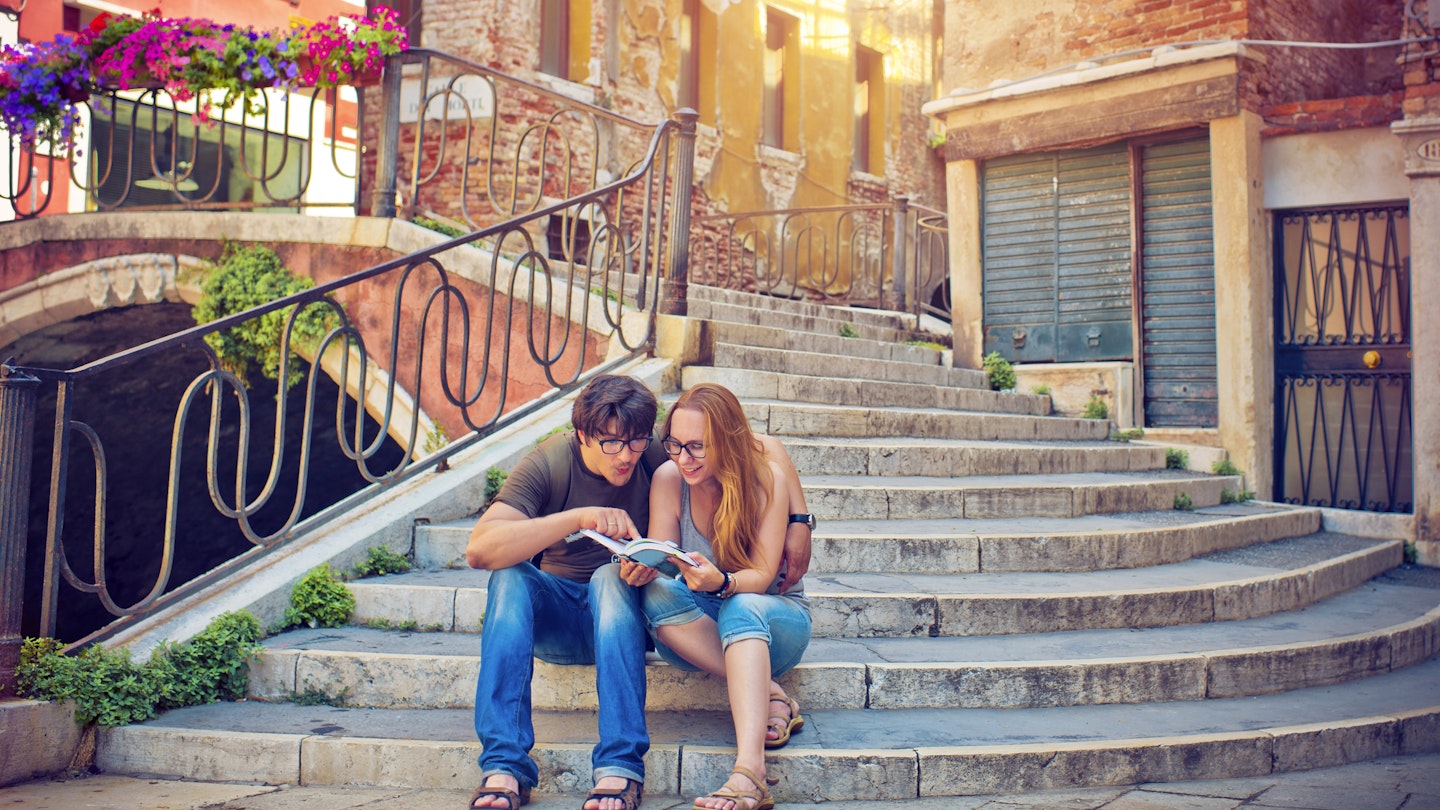Getting Around Venice: A Comprehensive Guide
One of the many reasons Venice is such a popular city with travelers from across the globe is its unique infrastructure and layout. Navigating a city that has canals instead of roads presents new challenges that your average main street will never experience!
It takes some getting used to – a relaxed attitude and the knowledge that moving around Venice and the islands of the Lagoon doesn’t come cheap certainly help – but our top tips will assist you in finding your way. Here is everything you need to know about the floating city’s vaporettos, buses, gondolas, and everything in between.
Nothing Beats Exploring Venice on Foot
Walking remains the best way to get around the six sestieri of Venice. The city on the Lagoon is relatively small – going from the Santa Lucia railway station to Piazza San Marco only takes about thirty minutes on foot, for example – and its main sights are usually well-marked and easy to find. Although you should probably arm yourself with a good GPS and a nice map, the unconventional layout of Venice’s streets and alleyways can thwart even the best sense of direction.
Strolling along the canals is the perfect way to familiarize yourself with the city and discover hidden corners and squares you might otherwise miss. There’s no need to worry about acqua alta – the city deploys walkways in case the streets get flooded, but it’s always wise to have some rain boots ready if you plan to visit in autumn.
Who Needs a Bus When You Have a Vaporetto?
Vaporettos are one of the staples of the Lagoon. Where “normal” cities have buses (Venice included – in its mainland area), the Serenissima has what are essentially floating buses. The vaporetto service connects all main points of interest in both the six sestieri and the other islands of the Lagoon.
There are several lines of vaporettos divided into four main categories, the most relevant to tourists being the “city center lines” 1 and 2, which sail along the Grand Canal.
Vaporettos can be quite expensive, and it’s better to buy your ticket beforehand and validate it at the machine next to the stop to avoid additional fees for purchasing onboard – a single ticket, valid for 75 minutes, costs around €9.50. You can also purchase 24-hour passes for one day, two days, three days, or seven days for €25, €35, €45, and €65, respectively.
A Traghetto is a Cheap Option for Crossing the Grand Canal
It’s not widely known, but there’s a traghetto (ferry) service that allows people to cross from one side to the other of the Grand Canal – it’s much cheaper than a vaporetto and is widely used by Venetians. The ticket costs €2 for tourists and there are several spots along the Canal where you can board the ferry. The service operates from around 9am to 6pm, varying slightly from spot to spot, and is closed on holidays and city festivals.
A Water Taxi is the Quickest (and Spendiest…) Option
Like any other city, Venice has its taxi service – they just don’t have wheels. Water taxis are definitely a good choice if you want to reach your destination in the quickest and most glamorous way possible, but keep in mind that they’re probably the most expensive means of transportation available (and prices go up even more at night). Water taxis can transport up to ten people, so the price is less daunting if you’re traveling in a large group.
A Gondola Ride is About the Experience Rather Than the Journey
Rather than a means of getting from A to B, the gondola is an experience and a tourist attraction in its own right. Routes and prices vary and are typically agreed upon on the spot with each gondoliere; you can expect to pay around €80 for a half-hour tour by day and about €100 by night. Sharing a gondola is always a good option to lower the costs.
Explore the Wider Lagoon by Ferry
The ferry service consists of two main lines, 17 and 11, which connect Venice to the wider Lagoon area, starting with the Lido, moving south to Pellestrina (on Line 11), and the beach area of Cavallino to the north (on Line 17). The ferry is an excellent choice if you want to bring your vehicle with you – prices start at €8 for cars and motorbikes, but that doesn’t include the passenger fares, which are the standard vaporetto fares in addition to the vehicle cost.
Accessible Transportation in Venice
Travelers with access needs might not immediately think of Venice as a very user-friendly destination due to its unique characteristics – canals, narrow streets, and lack of buses. However, the Serenissima is focused on dismantling architectural barriers, even if there’s always room for improvement.
For those who wish to explore the city on their own without public transport, a collection of barrier-free routes has been compiled by a group of experts, including residents with disabilities.
As for vaporettos, all should be equipped to accommodate everyone, although some issues may be caused by particularly high tides. Most vaporettos can transport up to four wheelchairs, and tickets are €1.50 (with a companion traveling free of charge).
Arriving in Venice
Marco Polo Airport
Water shuttles and water taxis depart from the airport ferry dock. Buses operate every 30 minutes (from 5:20am to 12:50am) to Piazzale Roma.
Treviso Airport
Buses head to Piazzale Roma or Tronchetto (for the monorail to Piazzale Roma) and connect to Treviso train station for trains to Santa Lucia station.
Piazzale Roma (Car Parks and Bus Station)
Vaporetti to city destinations depart from Piazzale Roma docks.
Venezia Santa Lucia Train Station
Vaporetti leave from Ferrovia (Station) docks.
Venezia Mestre Train Station
Transfer by train to Venezia Santa Lucia.
Venezia Terminal Passeggeri
Docking cruise liners usually shuttle passengers into Venice; otherwise, taxis and vaporetti leave from the waterfront.





